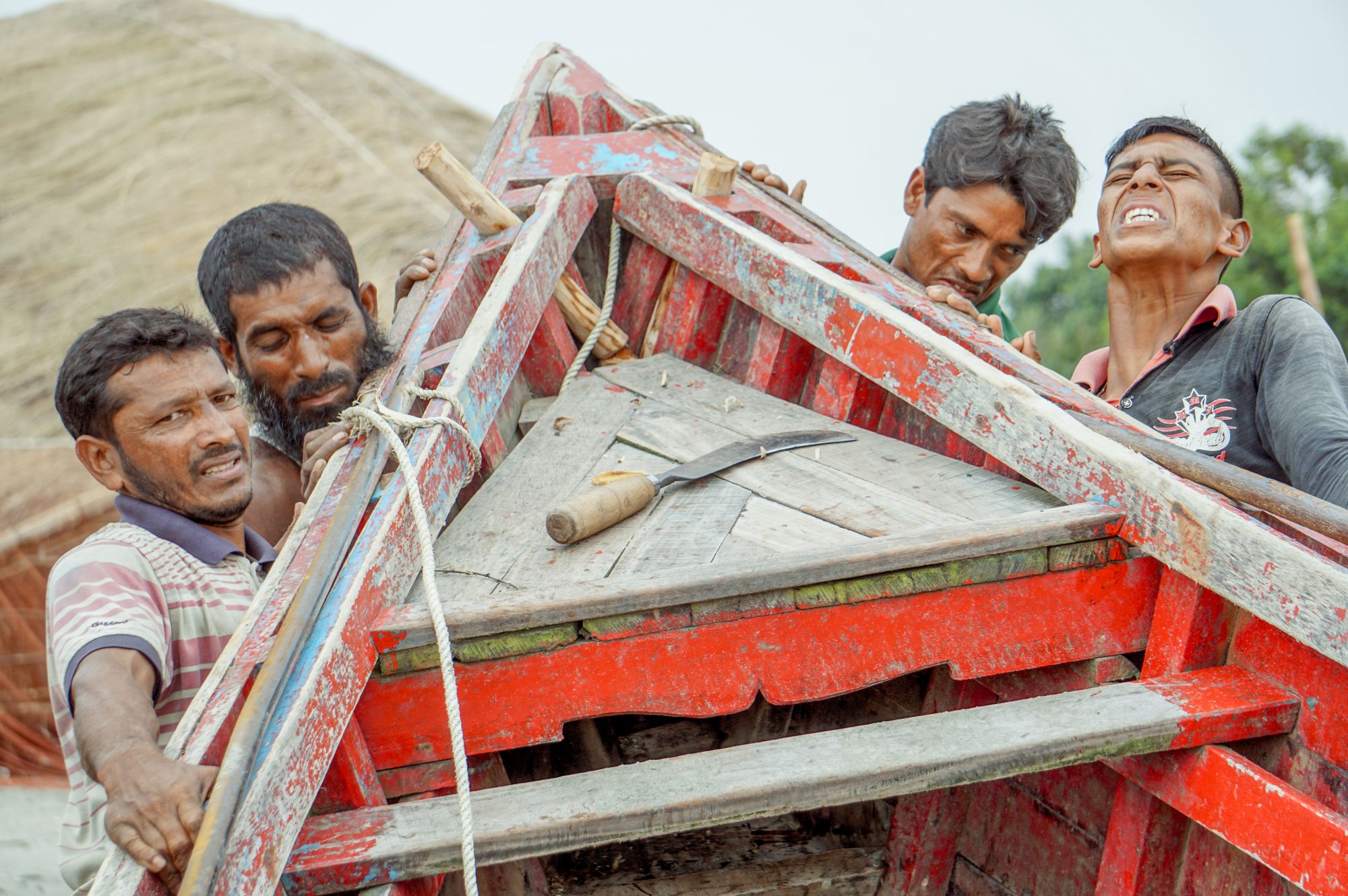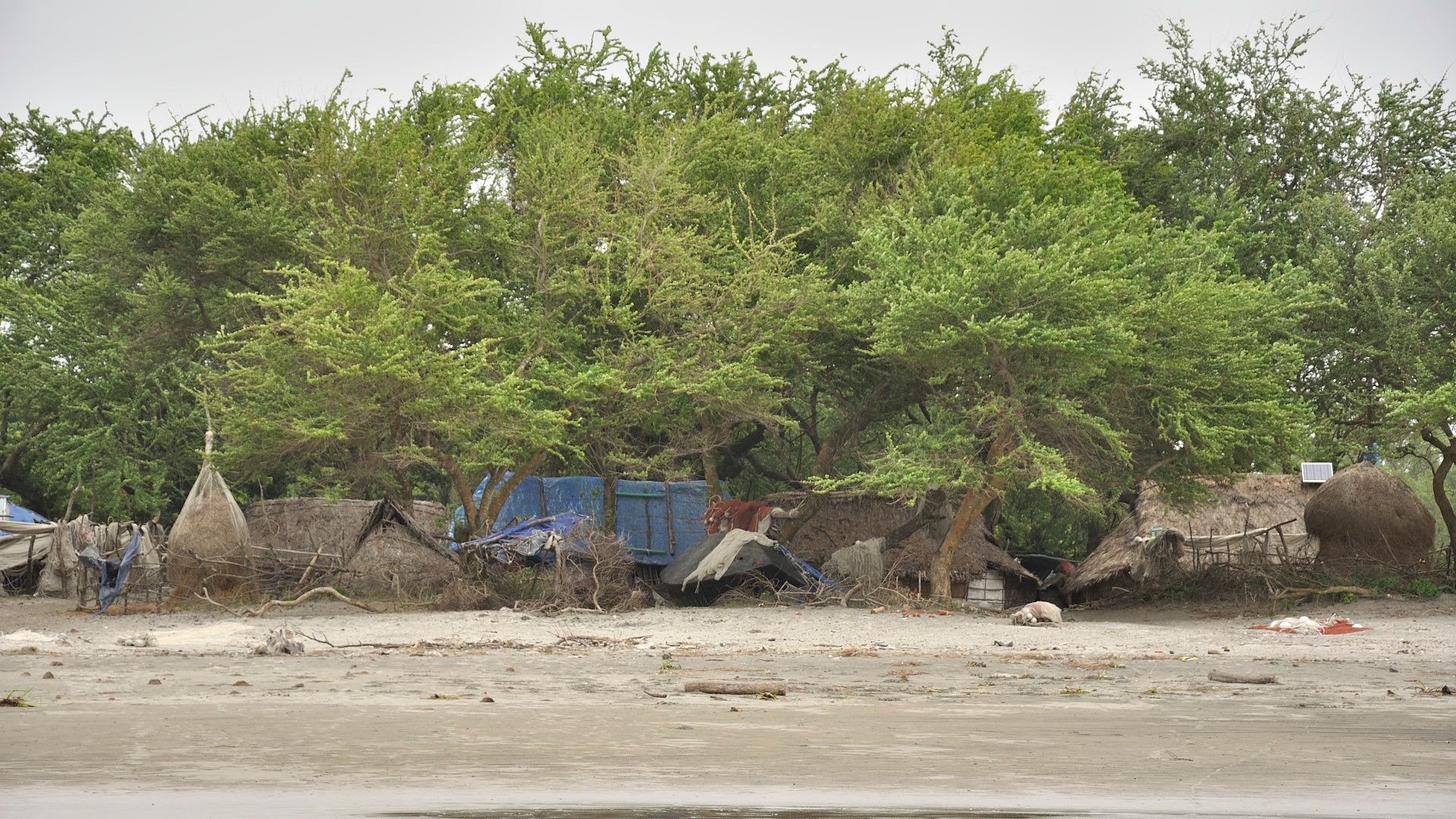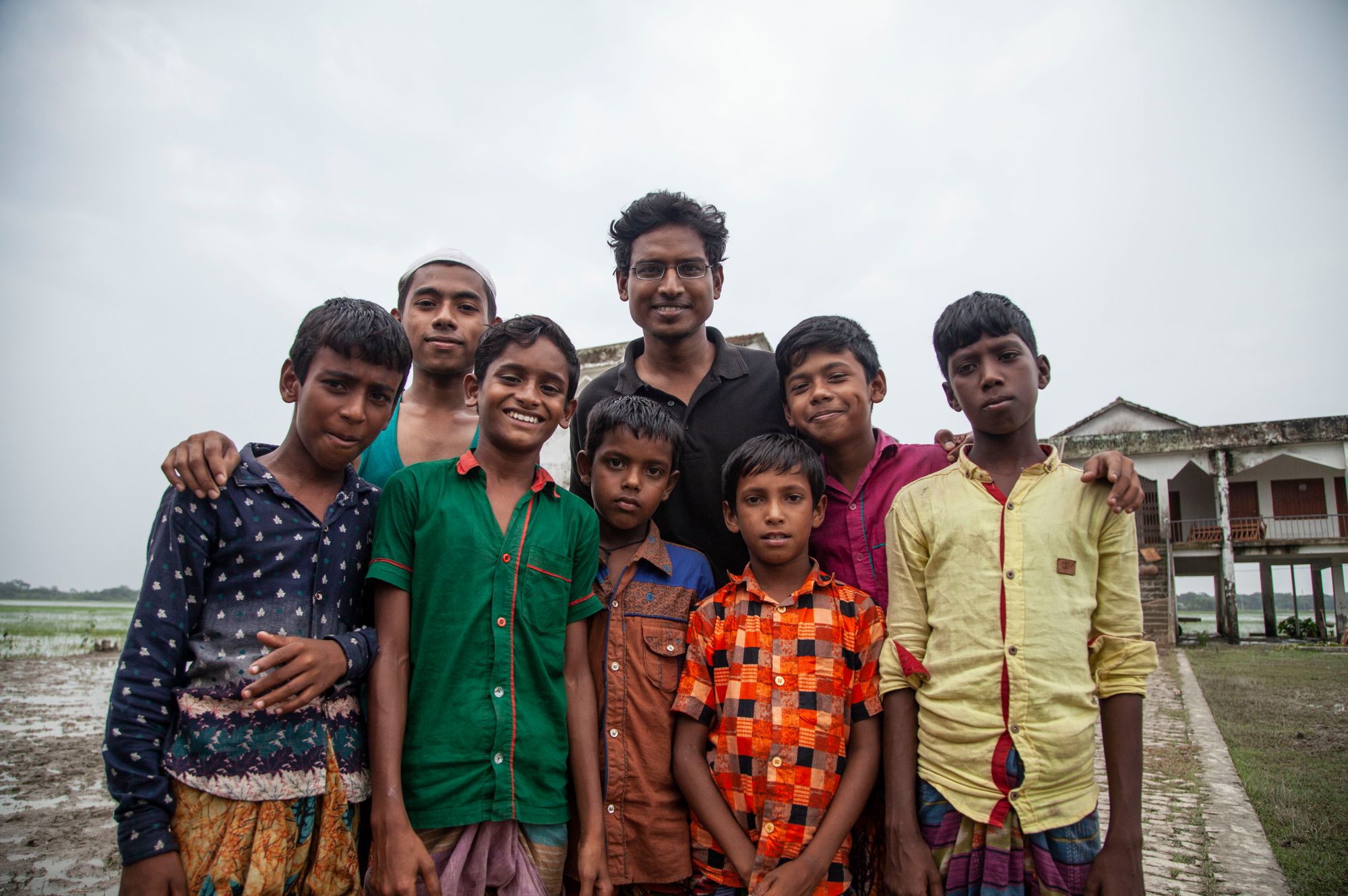"The Salt in Our Waters" by Rezwan Shahriar Sumit at COP26
Born and raised in the bustling Bangladeshi capital of Dhaka, our 2008 Talent Rezwan Shahriar Sumit's debut feature film Nonajoler Kabbo (The Salt in our Waters) focuses not on the busy, cosmopolitan city of his youth but on life in a remote fishing village on the Southern coasts, where the rough waters of the Bay of Bengal are a constant, at times ominous, presence.
An official selection at BFI London and Busan in 2020, The Salt in Our Waters tells a classic tale of clashing cultures; young versus old, city versus rural life, modernity versus tradition. A young artist initially welcomed by the rural fishing community he travels to is eventually blamed when their nets are pulled up empty. It isn't just each other that the characters must contend with however. Perhaps the most dangerous clash is that of man and nature, with the rising tides and the effects of climate change threatening not only their livelihoods, but their lives too.
Since shooting back in 2018, the village where the film was shot has disappeared due to the rising tidal waters; the local community dispersed.
The film has been recognised for its environmental message. By far the biggest nod to this is its selection to be screened at this year’s UN Climate Conference COP26 in Glasgow, Scotland. The first screening took place in front of young climate leaders from all across the world at the UN Climate Conference of Youth COY16. The second screening will be held within the official COP26 Green Zone.

Your first pictures from the coastal region of Bangladesh are from 2008, the same year you attended Talents. How did your time here inspire you?
Berlinale Talents shifted my perspective on the filmmaking industry. Not only did I learn that the worldwide film industry is a well-organized, well-run system in which you can make a living, but I also learned how powerful the medium can be in bringing about constructive social change. I went to seminars led by directors like Andrzej Wajda and Stephen Daldry. Their bodies of work and approaches to filmmaking tell us that filmmakers, like student politicians and grassroots
inventors, are change-agents. Those two weeks in Berlin ingrained in me principles that I still hold dear. I try to tell meaningful stories that reflect the culture in which I live.
The film focuses on a number of aspects of life on the Bangladeshi Delta, but climate change is a dominant theme. Were the local people supportive of your work?
The film represents both a cultural and environmental struggle. I think the two thematic strands are interconnected. In the film, at first, the local fishermen and their families welcome the modernist artist with open arms, but once the fishing shoals they depend on begin to disappear, the newcomer and his modern ideas are accused. They believe the disappearance is due to a divine curse.
“Climate change”, “anthropocene”, “carbon footprint”, and “Paris Agreement” are big words that members of this community do not understand. Although they must fight this crisis everyday, they do not know why this is happening to them. Nobody explained the environment situation as a whole. This void allows for the growth of religious superstition.
The film will be released in Bangladeshi theatres on November 26. Before the main premiere in Dhaka, we plan to hold multiple screenings in the coastal areas where we conducted our research. Each screening will be followed by a discussion session in which we will explore what is going on in other climate-vulnerable countries and how none of it is the local peoples' fault.
I couldn't have gotten this far without the guidance of fishermen; the script is filled with folk tales and personal experiences they've shared, and the fact that we're so close to showing the final product to them makes me both excited and nervous.


Where are the local people who starred in the film now?
Sadly, the village where we shot The Salt in Our Waters is no longer there. After the lockdowns were lifted, I returned to this beloved place to reconnect with old friends, but all I found were dead branches and sea water. It was a sobering experience for me. I discovered that the folks that had been involved in my production had relocated to settlements on the mainland, further north. This is an example of climate migration in action. When fish supplies run out, salinity rises, or a catastrophic weather event destroys their homes, many of them migrate to neighbouring cities or head straight to Dhaka. They lack the required abilities to adjust or seek new jobs, so the majority of them end up living in shanties.
Tide is Rising, a short documentary based on the video I filmed during this trip, including the interviews I conducted with displaced fishing families, is currently finishing post-production. I am hoping it will help raise much needed awareness about this topic.
What does it mean to you to have the film screened at COP26?
It means the world to me to be able to present the film in COP26 Glasgow. It appears as if the entire world has converged on one location. The official Blue Zone is where leaders, policymakers, and corporations are negotiating. Activists, on the other hand, have taken to the streets. They've already labelled COP26 a failure, claiming that wealthy governments and corporations are refusing to make meaningful, legally binding commitments. The protests are alive with slogans and cries for real change. “The people united will never be defeated” is a phrase that strikes a chord with me because this is also depicted in the film, with the fishermen banding together to overthrow an unjust system and a status quo that has kept them enslaved.
I believe that quite significant reforms are also required in the film industry. On major streaming platforms, I rarely come across environmental films from the Global South; instead, the majority of environmental films are either from the Global North or made by filmmakers from the Global North. I've long wondered why, given that the Global South is statistically the hardest hit by climate change related disasters. It is about time mainstream curators start seeking for climate stories that are accurate depictions of the problem. Not only labs and financing agencies, but also sales agents and distributors, must start rallying behind indigenous or local filmmakers who are braving the elements and making films on the frontlines of climate change.
